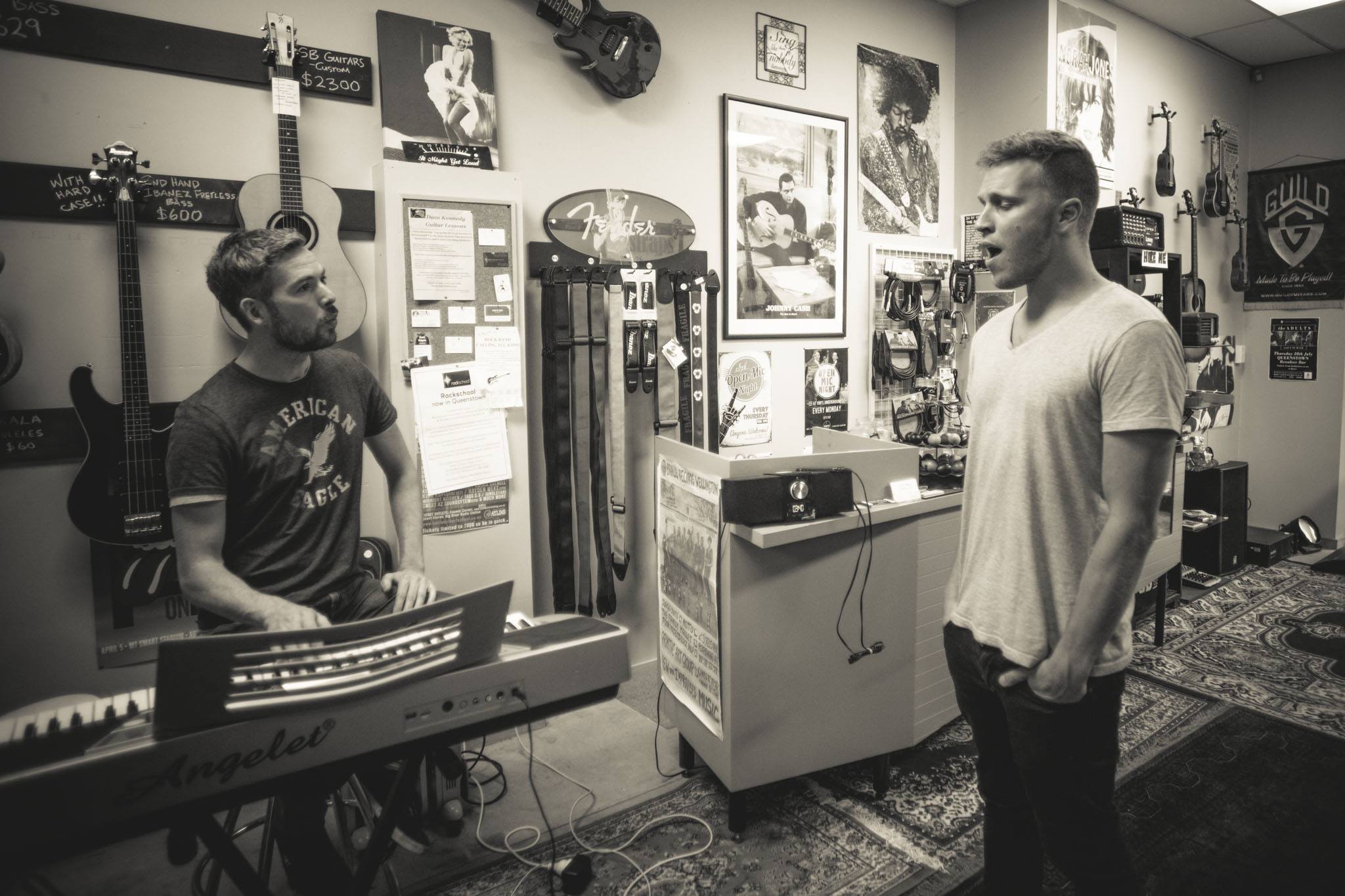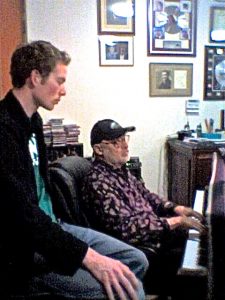TEACHING METHODS
Stuart is a fully qualified vocal coach, having trained overseas with some of the most well respected teachers and organizations in the world. Whilst most other voice teachers teach classical singing, what makes Stuart’s teaching unique is his unique focus and range of techniques that apply specifically to modern styles of contemporary music such as Pop, Rock R&B, Jazz, Musical Theatre and more.
Some of the key benefits you will receive from this training are:
- Eliminate Vocal Breaks
- Fix Vocal Strain
- Long Term Vocal Healthy
- Increased Vocal Range
- Greater Vocal Power & Control
The methods below have a proven track record of success among top professional singers and have the backing of proven vocal science.

VOCOLOGY IN PRACTISE
Vocology In Practice (ViP) is an international organization of voice teachers committed to continuing their education. We organize events that feature the latest research as well as share information with each other on how to be the most effective we can possibly be for our students. Stuart is one of the first VIP teachers in the world.
Here is a list of some of the high profile singers that have worked with ViP instructors:
- Natasha Bedingfield
- Jordin Sparks
- Michael Jackson
- Demi Lavato
- Regina Spektor
- Sara Bareilles
- A Great Big World
- Joss Stone
- Adam Lambert
- Justin Bieber
- Kelly Clarkson
- One Direction
- Martina McBride
- The Weeknd
- Cee Lo Green
- Ben Folds
- Pentatonix
SPEECH LEVEL SINGING
 The Speech Level Singing Method is exceptionally adaptable to a broad range of styles, because it does not force rigid technique. It develops the voice free of clutter, manufactured sounds, and overculture. This techniques is successful for improving the voices of singers ages 8 to 85 and is particularly effective at rejuvenating senior and damaged voices.
The Speech Level Singing Method is exceptionally adaptable to a broad range of styles, because it does not force rigid technique. It develops the voice free of clutter, manufactured sounds, and overculture. This techniques is successful for improving the voices of singers ages 8 to 85 and is particularly effective at rejuvenating senior and damaged voices.
The technique is based around the natural bridges in the voice, allowing the singer to vocalize with a connected tone from low to high and back. Traditional vocal methods are limited to using exclusively chest voice for pop and theater styles, or using a more classical sounding head voice for classical or opera (or in musical theater when the chest voice gives out). In these traditional techniques, there is generally no cohesion between the chest and head voice.
Stuart has personally trained with Seth Riggs (Voice Coach for Stevie Wonder, Michael Jackson, Madonna etc) who discovered the SLS method. His dedication has earned him the honor of being personally certified to teach Speech Level Singing by its founder Seth Riggs.
Click here to view his certification

Here is a list of some of the high profile singers that use the Speech Level Singing method
- Stevie Wonder
- Ray Charles
- Josh Groban
- Michael Jackson
- Madonna
- Janet Jackson
- Bryan Adams
- Red Hot Chili Peppers
- Bryan Wilson (The Beach Boys)
and many more!
INTERNATIONAL VOICE TEACHERS OF MIX
Founded in 2010, IVTOM is a professional organization for voice teachers. We provide ongoing education, a mentor program, resources, international conferences, and a network for our members. IVTOM members include highly trained professionals who hold degrees and certifications from the world's best universities and associations; and specialized experts, including otolaryngologists, speech pathologists, and voice scientists, who give us unparalleled access to medical and scientific information about the human voice.
“Mix” is a technique that can be applied to any style of singing. It gives singers the capability to perform with a smooth, strong, balanced and continuous sound, from the bottom to the top of their vocal register, typically with a range that extends far beyond where they began. Singers who mix can easily transition through the bridges in their voice without strain, blending registers effortlessly. They are able to focus on performing a song, whatever their musical style, because their voices are strong, flexible, and reliable.
Stuart has worked with Dean Kaelin, who is the founder of IVTOM, since 2006. Deans student David Archuleta was runner up on American Idol.
THE TRAINING PROCESS
1. REMOVE EXCESS TENSION
Every singer, at some point in time, will have to deal with excessive muscular tension. One reason it’s so common is that great singing is usually very dramatic. This means that singers have to “live on the edge” and communicate extreme emotion to their audience. It can be very difficult to do this without over engaging the muscles inside and outside of your larynx. Many of us will try to force the instrument to do our will. As you likely already know, this doesn’t work out very well!
2.BUILD COORDINATION
The qualities that singers strive for (range/power/consistency) are directly related to how much coordination exists in your larynx. Most singers have a hard time singing strong higher pitches without “flipping” into a much lighter tone/timbre. The Thyroarytenoid (TA) and Cricothyroid (CT) muscles are particularly important. It’s my job to give you a workout that teaches these muscle groups to play nicely together. As you learn to transfer necessary muscle tension between these two muscle groups with a lot of accuracy, your sound will become consistently strong over a very large range.
3.BUILD STRENGTH
Technically, strength comes from coordination. However, I’ve found that it’s necessary to approach our exercises a little differently when it comes time to “finish the tone”, especially on higher pitches.
4.APPLY NEW SKILLS TO SONGS
As your voice grows, we are always working on injecting your songs with these new skills. This requires making a lot of vowel and consonant adjustments so that the vocal folds get as much help as possible. Songs are so challenging also because the emotion that comes with singing actual music can sabotage our technique in the beginning. Emotion is a very important part of singing, we just need to learn to thrive within that state of mind.
5. CONSTANTLY INCREASE MUSICIALITY/STYLE
Style and musicality are what thrills your audience, even more than range and power. Therefore, I make a point of adding as much musical work to your training as possible.
6.ENCOURAGE FREEDOM AND CONNECTION TO SONG MEANING
At the end of the day, we never want to be overly technical. It’s so important then to always take some time just to sing without over thinking.
